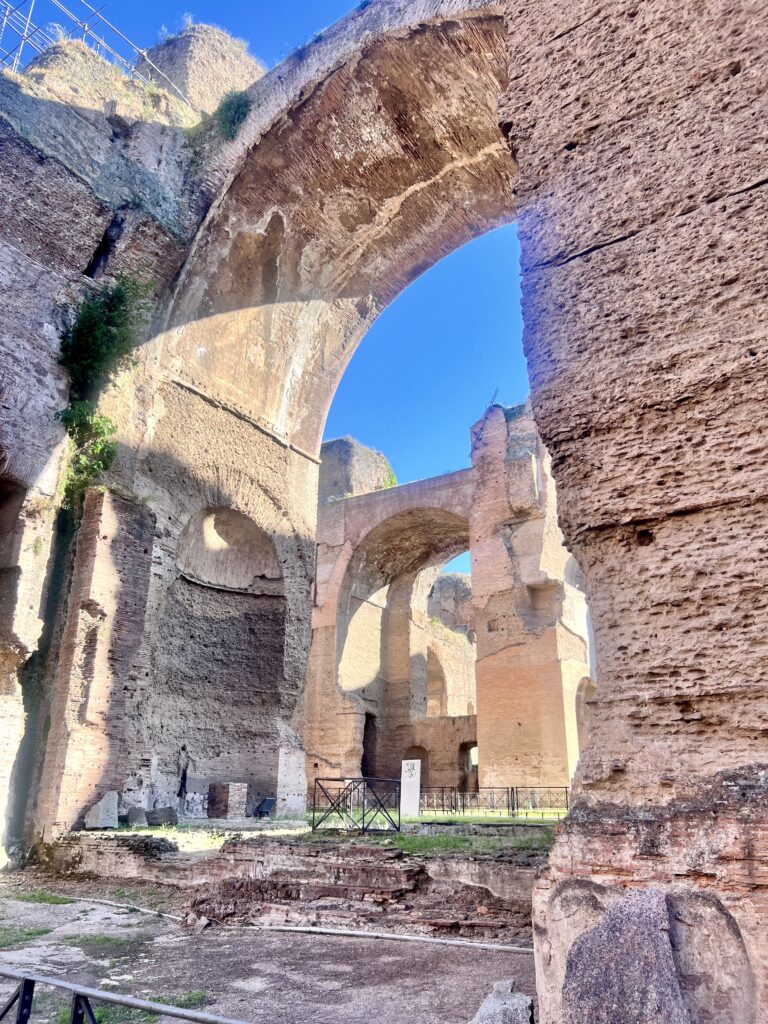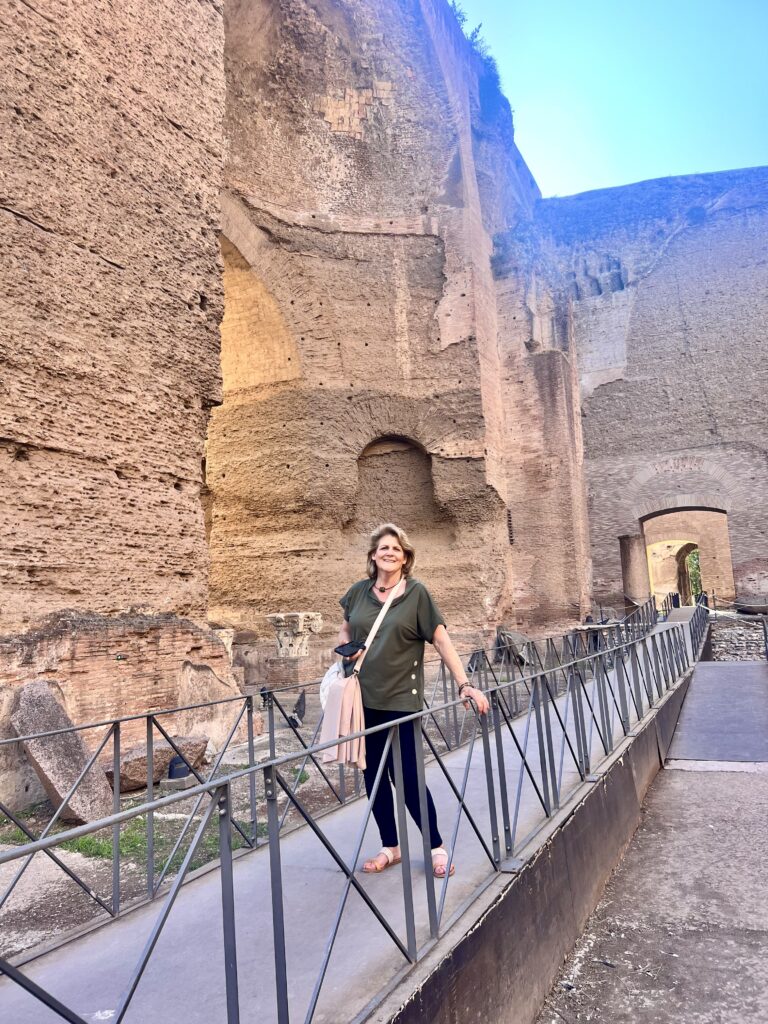Nestled within the vibrant heart of ancient Rome, the Baths of Caracalla stand as a monumental testament to the grandeur and ingenuity of Roman architecture and social life. Despite countless visits to the Eternal City, it’s fascinating to think how often one might overlook these colossal ruins, which once served as a bustling hub of recreation, relaxation, and community for the ancient Romans.
Commissioned by Emperor Caracalla and completed in 216 AD, the Baths of Caracalla were far more than mere baths; they were a marvel of engineering and luxury designed to cater to the physical and social needs of Rome’s populace. These grand structures were located approximately 2 kilometers south of the Roman Forum and the Colosseum, strategically placed to be easily accessible yet expansive enough to accommodate thousands of visitors daily.
Walking through the remains of the Baths, it’s easy to imagine the lively scenes that would have played out in their heyday. The baths comprised an intricate complex that included not only the expected bathing facilities but also a variety of other amenities. These facilities were ingeniously arranged to create a seamless flow from one area to another, illustrating the Romans’ deep appreciation for both function and form.
Upon entering the Baths, visitors would first encounter the **palaestrae**, expansive open courtyards where they could engage in various physical exercises. These areas were essentially the gyms of their time, equipped with space for wrestling, boxing, and other athletic pursuits. The design encouraged not just physical fitness but also social interaction, as exercising was often a communal activity.
Following a rigorous workout, bathers would progress through a series of bathing rooms. The **frigidarium**, a large cold room, offered a refreshing start to the bathing process. From there, one might move to the **tepidarium**, a warm room that helped bathers gradually adjust to the heat. Finally, they would reach the **caldarium**, a hot room where the air was thick with steam, perfect for opening pores and relaxing muscles.
The grandeur of these baths did not stop at their functional aspects. The interiors were adorned with stunning mosaics, intricate frescoes, and grand marble statues, which provided a feast for the eyes and the body. These decorations reflected the Romans’ love for art and beauty, ensuring that their moments of leisure were infused with cultural richness.
Moreover, the Baths of Caracalla included a **natatio**, an open-air swimming pool that allowed for leisurely swims under the Roman sky. Surrounding this central area were lush gardens and shaded porticoes, where visitors could stroll, converse, or simply relax and enjoy the environment.
Beyond their architectural and aesthetic grandeur, the Baths of Caracalla played a crucial role in Roman society. They were a place where citizens of all classes could come together, fostering a sense of community and equality. Access to the baths was often free or very inexpensive, thanks to state subsidies, making them a democratic space in an otherwise hierarchical society.














These baths were built not just for hygiene and relaxation but also as a political statement. Emperors used grand public works like the Baths of Caracalla to demonstrate their benevolence and to reinforce their status and power. By providing such luxurious facilities, they sought to curry favor with the populace and showcase the might and sophistication of the Roman Empire.
In summary, the Baths of Caracalla were a multifaceted marvel of ancient Rome, serving as a center for physical fitness, social interaction, and cultural enjoyment. Located just a short distance from iconic landmarks like the Roman Forum and the Colosseum, these baths were an integral part of daily life in Rome. Despite their current state as ruins, they continue to captivate visitors with their historical significance and architectural brilliance, offering a window into the sophisticated leisure culture of the Romans.
Visiting the Baths of Caracalla offers a unique and immersive glimpse into the grandeur of ancient Roman life, making it an essential stop on any tour of Rome. These baths are not just architectural marvels but also a testament to the Roman Empire’s sophistication, innovation, and communal spirit. By exploring this vast complex, you can walk in the footsteps of ancient Romans, imagining the vibrant daily scenes that once unfolded within these walls. The stunning mosaics, intricate frescoes, and sheer scale of the baths provide a tangible connection to the past, allowing you to appreciate the cultural and historical richness of Rome beyond its more famous landmarks like the Roman Forum and the Colosseum. The Baths of Caracalla are a remarkable reminder of the city’s illustrious heritage, offering a serene yet awe-inspiring experience that captures the essence of ancient Roman leisure and luxury. Be sure to get your tickets today!
#bathsofcaracalla #ancientrome #romanempire #hierarchialsociety #eternalcity #rome #italy


2 thoughts on “Caracalla Baths Rome: Ultimate Guide to Ancient Roman Baths”